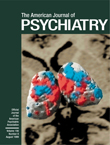Consider the problem: We know that humans exhibit and experience affect from birth cry though agonal moan, but for the cadre of observers and clinicians who rely on spoken narrative to understand the development of emotionality, the “formative years” for child development are also the silent years. Most of what we might want to know about the early experience of affect cannot be explained or described to us by the babies and toddlers we might want most to interview. No matter how much of infantile affect is pure physiology and subcortical in origin, adult emotion also involves information derived from stored and retrieved life experience; therefore, the neocortex is involved. Most theories regarding the nature of emotion favor “sophisticated” neocortical structures over “primitive” subcortical mechanisms as the wellspring of emotion. It is the procession from innate to adult, from primitive to sophisticated, that fascinates Denham and provides the motivation for this well-written book.
The author is a highly respected researcher who has blended her own studies of small children with hundreds of others from a wide range of scholarly literature, focusing our attention on separate paths of affective maturation. How, she asks, is affect expressed over the life span? How do children understand their own experience of emotion? How do they understand the emotionality of others in social situations? What rules for the regulation of affective expression operate during each stage of development? How do all of these maturational sequences influence and correlate with social competence? Denham develops maps for each realm of affective development.
Many of the studies cited suggest that, even in the earliest years, the style of affect expression adopted by children depends greatly on parental standards and habits. Empathic capacity varies in direct proportion with parental ability to welcome, solicit, and accept the affective messages of their young offspring: “Children who are more capable of explaining emotions in conversations with parents are also more sympathetic in response to peers’ emotions” (p. 39). Quite early, children develop personal styles of affect regulation, affective expression, tolerance for the affect of others, and systems for the management of the affect seen in others. All of this fits well with Kelly’s hypothesis
(1) that adult intimacy is dependent on a couple’s ability to express affect to each other so that they can mutualize and maximize positive affect as well as mutualize and minimize negative affect. Parental management of affective expression during the first few years of life, therefore, profoundly affects our ability to achieve personal intimacy as adults. Unless some therapeutic process intervenes in the microculture so established, the faces that observe and, one hopes, mirror the cradle shape social interaction at many levels.
Scientists, too, live in cultures. It is disappointing that Denham offers as her own theory of emotion what really is Cannon’s hypothesis
(2) that emotion begins with neocortex-based perception, which she describes as “notable change” (figure 1.1, p. 6), and that the cognitive part of emotional experience is quite separate from or independent of the physiological. Facial display in infant, toddler, or older child, therefore, is given little attention, and the kind of emotion notable to her group is more what we might call a stable affective state than what anyone can see flickering over the face of child or adult. The intent of this book is to summarize a lot of work on the surface of emotional maturation, not the deeper significance of emotion itself or its relation to interaffectivity. The absence from this volume of reference to Stern
(3) or Beebe
(4) exemplifies this narrow focus, however important such an attitude may be to the development of a career in research. Perhaps necessary reading for other researchers in child development, this book might prove useful for those psychotherapists who see adult styles of emotional expression as clues to trauma or more subtle difficulty in early life.

